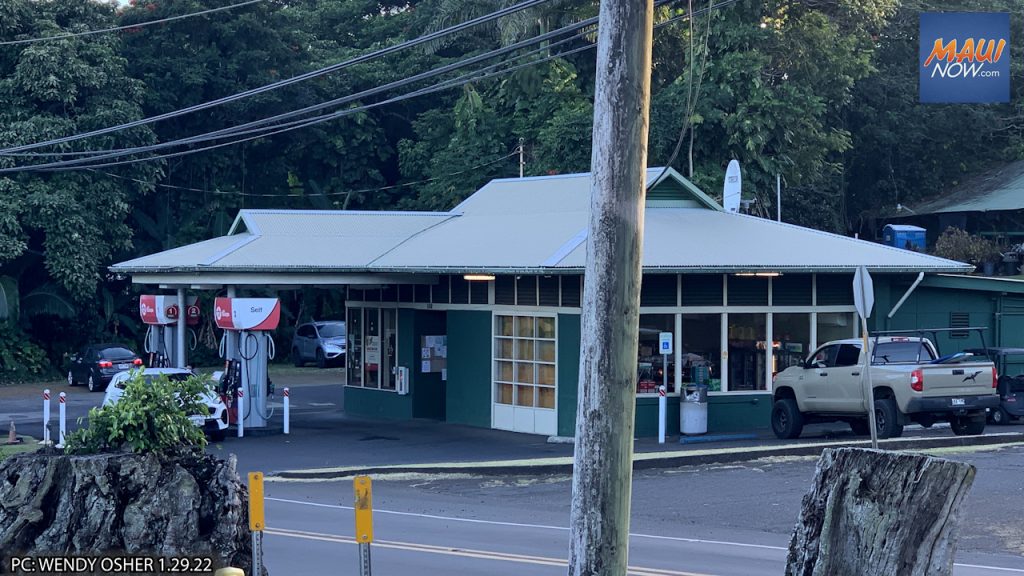Hawaiʻi gas prices skyrocket to second highest in the nation
By Wendy Osher

Drivers across the state are paying more attention to their driving habits and some are contemplating hybrid and electrical vehicle investments as gas prices continue to soar.
Hawaiʻi gas prices skyrocketed to the second highest in the nation behind California.
This comes despite dropping oil prices, according to AAA Hawaiʻi, with gas prices on Thursday listed at:
- $5.03 in Honolulu, 32 cents above last week, 61 cents higher than a month ago, and $1.59 higher than the price on this date last year.
- $5.26 in Kahului, Maui, which is 28 cents higher than last week, 64 cents higher than last month, and $1.61 higher than a year ago.
- $5.31 in Līhuʻe, Kauaʻi, which is up 27 cents from last week, 55 cents higher than last month, and $1.45 higher than a year ago.
- $5.18 in Hilo on Hawaiʻi Island, up 33 cents from last week, 69 cents higher than a month ago, and $1.42 higher than on this date a year ago.
The prices listed are a snapshot and are derived from fleet vehicle credit card transactions at specific participating stations. They are not reflective of all stations in those cities or towns.
This translates to a statewide average of $5.12 for regular unleaded gas in Hawaiʻi as of Thursday, March 17, 2022. Thatʻs 31 cents higher than last week and a new record for the 15th consecutive day.
Honolulu’s average price jump surpassed $5 a gallon for the first time ever, according to the AAA Hawaiʻi Weekend Gas Watch.
The average national price is $4.29, down three cents from a week ago.
Meanwhile, rural areas of Maui County like Lānaʻi and the East Maui town of Hāna, traditionally deal with higher costs at the pump. Back on January 29, Hāna gas was already $5.72 for regular unleaded. Today, regular unleaded gas is $6.78 in Hāna, up more than a dollar from two months ago. Gas prices on the island of Lānaʻi reportedly hit $6.39 on Jan. 24, 2022, before dropping back down below the six dollar mark.
Drivers looking to save on gas are still paying more than theyʻre used to at Costco Gas. The price for regular unleaded was $4.66 for a gallon of regular unleaded last week Saturday. In less than a week, the price had increased 13 cents to $4.79 on Friday, according to price listings on GasBuddy. To fill a 10 gallon tank, that places the price tag at close to $50.

“We did see oil prices drop sharply in the last week, although they regained momentum today, and it may be that the price increases from the previous week did not fully capture the increased oil cost for the state,” said Liane Sumida, AAA Hawaii general manager said in a press release on Thursday. “For a brief period in the last week, Nevada’s prices were higher than Hawaiʻi’s, but the last two days of local price increases have once again given Aloha State drivers the second highest gas prices behind California, where today’s statewide average is $5.79.”
Looking to save? AAA Hawaiʻi offered some tips for drivers to minimize the impact of rising costs.
AAA Hawaiʻi tips to save on fuel include:
- If you use premium unleaded fuel, make sure it is required for your vehicle, not just recommended. AAA’s Automotive Research Center found that vehicles with recommended premium fuel performed safely with regular unleaded gasoline.
- Make sure your tires are properly maintained and inflated to the correct level.
- Maintain your car according to the manufacturer’s recommendations. Regular service will ensure optimum fuel economy.
- Avoid “jackrabbit” starts and hard accelerations. These actions greatly increase fuel consumption.
- Slow down and drive the speed limit. Higher speeds result in more aerodynamic drag.
- Use cruise control on the highway to help maintain a constant speed and save fuel. However, never use cruise control on slippery roads because you could lose control of the vehicle.
- Minimize your use of air conditioning.
- Avoid extended idling to warm up the engine, even in colder temperatures. It’s unnecessary and wastes fuel.
- Remove unnecessary and bulky items from your car.
- Minimize your use of roof racks and remove special carriers when not in use.









